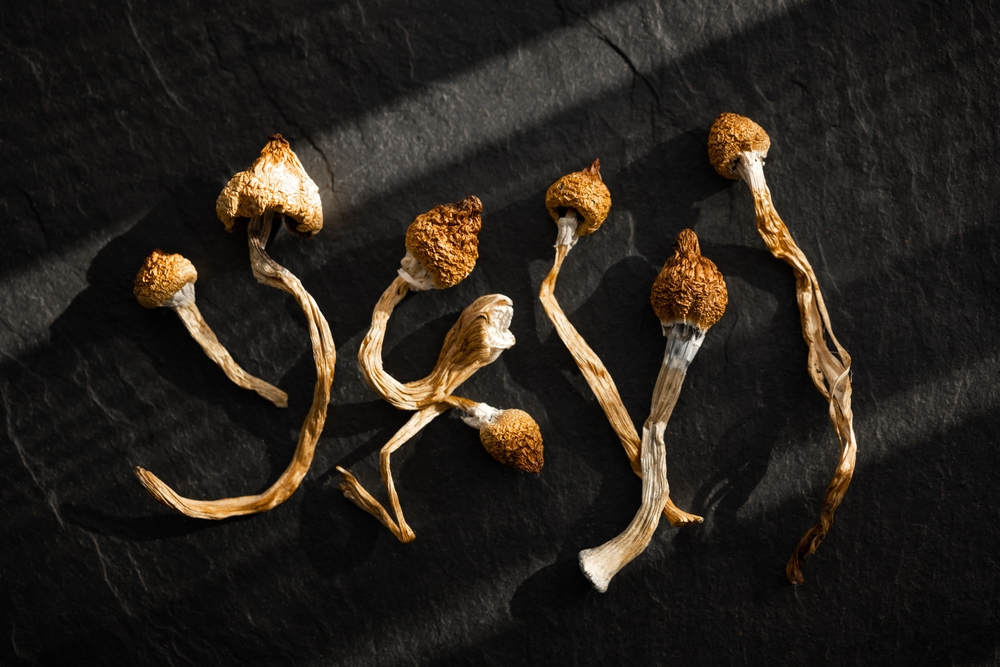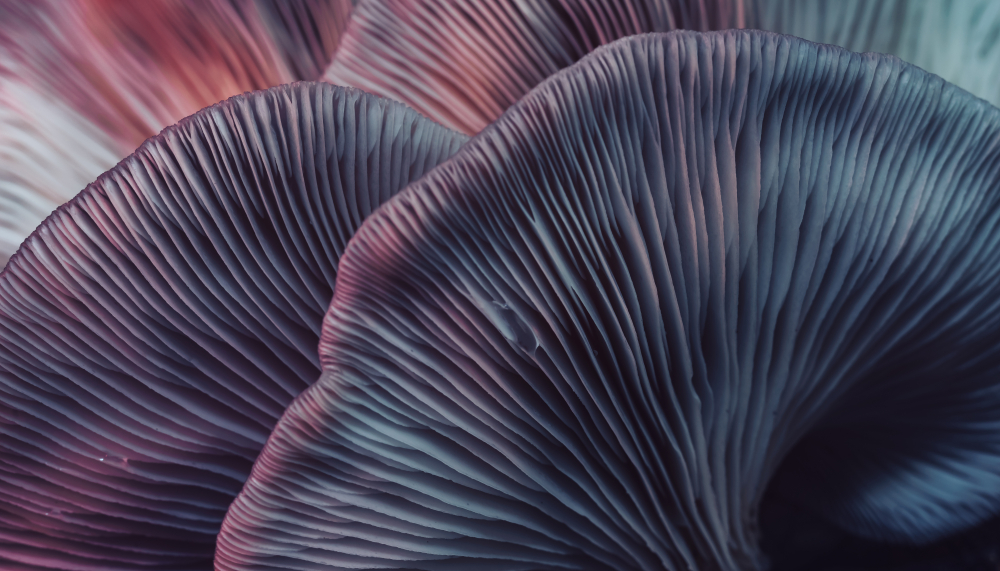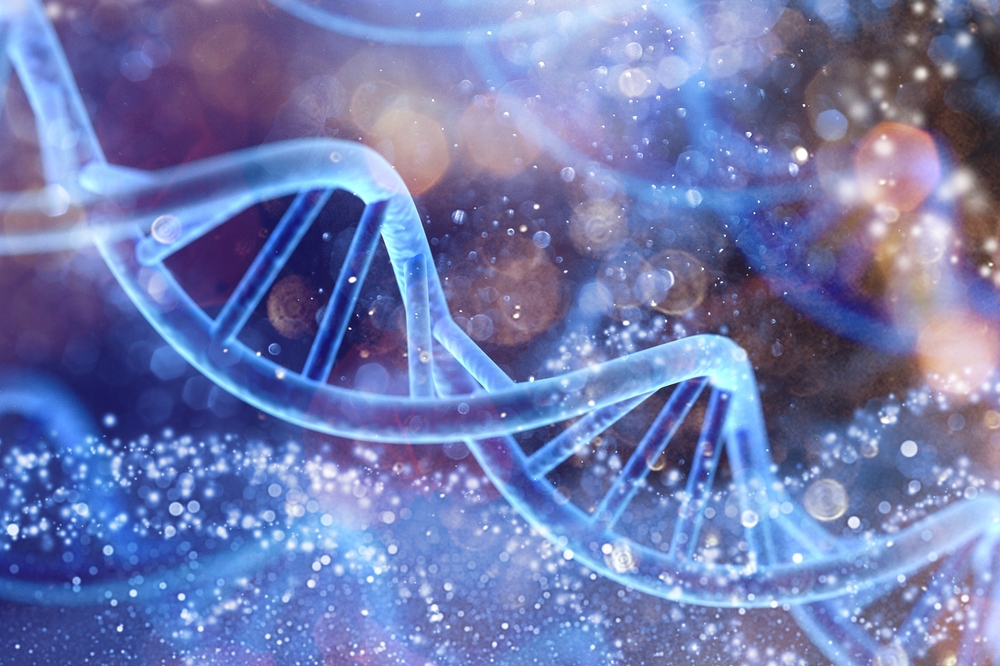Psilocybin Shows Potential In Slowing Human Cell Aging And Increasing Lifespan In Mice

Scientists have been searching for the fountain of youth for centuries, exploring everything from exotic plants to cutting-edge genetic therapies. But the latest breakthrough in aging research comes from an unexpected source that grows quietly in forests around the world, hidden in plain sight.
Recent laboratory discoveries suggest that compounds found in magic mushrooms hold the keys to extending human lifespan and reversing cellular aging. Research teams have uncovered evidence that these natural substances can cause cells to behave like younger versions of themselves, thereby preserving the molecular structures that deteriorate with age.
When researchers tested these compounds on elderly laboratory mice, the results were so dramatic that even experienced scientists were stunned. Something remarkable happened to the animals’ survival rates, their appearance, and their cellular health. The implications could transform our understanding of aging and longevity.
However, perhaps most intriguing is that this discovery emerged from studying a substance that most people associate with recreational use rather than serious medical research. What scientists found challenges everything we thought we knew about both psychedelics and aging.
Forest Fungi Hold Keys to Stopping Cellular Clock

Psilocybin, the primary psychoactive compound in magic mushrooms, has captured scientific attention for its potential to treat depression, anxiety, and post-traumatic stress disorder. Over 150 clinical studies have explored its therapeutic applications, with many showing remarkable success rates for conditions that traditional medications struggle to address.
However, researchers at Baylor College of Medicine discovered something entirely unexpected when they examined the effects of psilocybin beyond the brain. Instead of focusing on psychological benefits, they investigated whether this compound might influence fundamental aging processes at the cellular level.
Laboratory experiments revealed that psilocin – the active form of psilocybin that forms when the body metabolizes the original compound – can dramatically extend the lifespan of human cells grown in culture. Some cells treated with psilocin lived 57% longer than untreated controls, maintaining their youthful characteristics far beyond what is normally expected.
Even more remarkably, when researchers tested psilocybin in aged mice equivalent to humans in their early 60s, the treated animals showed significantly improved survival rates and visible signs of rejuvenation.
Lab Results That Made Researchers Do Double-Takes
Dr. Louise Hecker, an associate professor specializing in aging research, led the groundbreaking study that has captured international attention. Her team’s findings, published in npj Aging, provide the first experimental evidence that psilocybin might function as a powerful anti-aging agent.
“I was floored by the data,” Hecker told reporters when describing her reaction to the initial results. Working with human lung and skin cells, researchers administered different concentrations of psilocin and monitored cellular behavior over extended periods.
Standard laboratory protocols for studying cellular aging involve growing cells through multiple generations until they reach senescence, the point at which cells stop dividing and essentially retire from active biological functions. Usually, human cells complete this cycle within predictable timeframes; however, psilocin treatment changes everything.
Treated cells continued to divide and maintain healthy characteristics long after the control cells had entered senescence. Depending on the dose administered, cellular lifespan was extended between 29% and 57% beyond normal expectations. Higher concentrations produced more pronounced effects, suggesting a dose-dependent benefit.
Mouse studies confirmed these laboratory findings in living organisms. Researchers treated 19-month-old female mice, equivalent to humans in their early 60s, with monthly psilocybin doses over 10 months. Results showed an 80% survival rate in treated animals compared to 50% in untreated controls.
Psychedelic Turned Respectable Gets Scientific Makeover

Psilocybin belongs to a class of naturally occurring compounds called tryptamines, produced by over 200 species of mushrooms worldwide. When ingested, enzymes break down psilocybin into psilocin, which crosses the blood-brain barrier and activates serotonin receptors throughout the nervous system.
For decades, psilocybin remained classified as a Schedule I controlled substance with no recognized medical value. However, mounting scientific evidence has gradually shifted regulatory perspectives. The FDA designated psilocybin as a “breakthrough therapy” for treatment-resistant depression, acknowledging its significant therapeutic potential.
Current clinical trials investigate psilocybin’s effectiveness for various conditions, including major depression, anxiety disorders, addiction, chronic pain, and neurodegenerative diseases like Alzheimer’s. Many studies report lasting improvements from single treatment sessions, with benefits persisting for months or years.
What makes psilocybin unique among psychiatric medications is its apparent ability to produce profound, durable changes in brain function and behavior. Unlike daily antidepressants that require continuous use, psilocybin treatments often provide sustained benefits through limited dosing protocols.
Molecular Clocks That Determine Your Expiration Date
Understanding psilocybin’s anti-aging potential requires grasping how aging occurs at the molecular level. Every human cell contains chromosomes capped with protective structures called telomeres – repetitive DNA sequences that shield genetic material during cellular division.
Each time cells divide, telomeres shorten slightly. Eventually, when telomeres become critically short, cells enter a state of senescence and cease dividing. This process contributes to visible signs of aging, including wrinkled skin, gray hair, reduced muscle mass, and declining organ function.
Oxidative stress accelerates telomere shortening and cellular damage. Free radicals – unstable molecules generated during normal metabolism – attack cellular components, including DNA, proteins, and membranes. While the body possesses antioxidant systems to neutralize free radicals, these defenses become less effective with age.
Cellular senescence also triggers inflammatory responses that spread damage to surrounding tissues. Senescent cells release inflammatory signals that recruit immune cells and promote tissue dysfunction, creating cycles of accelerating damage throughout the aging process.
Psilocin Tricks Cells Into Forgetting Their Age

Hecker’s team employed established protocols for studying cellular aging, growing human lung fibroblasts through multiple generations while monitoring various markers of aging. Psilocin treatment resulted in consistent improvements across numerous measures of cellular health.
Treated cells maintained longer telomeres compared to controls, suggesting preserved genetic stability. They also exhibited reduced oxidative stress levels and increased production of SIRT1, a protein strongly linked to longevity and the regulation of cellular health.
“The study provides a unique look at the potential of psychedelics to promote healthy aging and provides a provocative mechanism to explain how they do it,” noted Scott Thompson, a professor at the University of Colorado who was not involved in the research.
Western blot analysis revealed dose-dependent changes in proteins regulating cell division and stress responses. Psilocin treatment reduced markers of cell cycle arrest while increasing indicators of active DNA replication, suggesting cells maintained their proliferative capacity longer than usual.
Researchers validated findings using different cell types, including adult human skin fibroblasts. Results remained consistent across cell lines, with 100 μM psilocin treatment extending cellular lifespan by 51% while reducing senescence markers and oxidative stress.
Old Mice Start Looking Young Again
Animal studies provided crucial evidence that laboratory findings can be applied to living organisms. Researchers selected 19-month-old female mice for treatment, roughly equivalent to humans entering their early 60s – an age when anti-aging interventions might provide maximum clinical benefit.
Treatment protocols involved monthly oral doses over 10 months, starting with lower doses initially and increasing to higher maintenance levels. Mice received 5 mg/kg for the first treatment, followed by 15 mg/kg monthly thereafter.
Survival results exceeded expectations. By study completion, 80% of psilocybin-treated mice remained alive compared to 50% of controls – a 60% improvement in survival rates. Given that this intervention began relatively late in the animals’ lives, such dramatic benefits suggest powerful anti-aging effects.
Visual improvements accompanied survival benefits. Treated mice exhibited hair regrowth in previously bald areas and a restoration of brown pigmentation in areas where the fur had turned white. These cosmetic changes reflect underlying improvements in cellular function and metabolic health.
“It’s exciting that we can give this intervention in late life and have such a dramatic impact,” Hecker explained when describing the unexpected magnitude of observed benefits.
Connection Between Happy Brain and Young Cells

Scientists have proposed the “psilocybin-telomere hypothesis” to explain how psychedelic treatments might influence aging processes. This theory builds upon established connections between mental health and biological markers of aging.
Research consistently shows that depression, chronic stress, and anxiety accelerate telomere shortening and biological aging. Conversely, positive psychological states correlate with longer telomeres and slower aging processes. Given psilocybin’s effectiveness for treating mental health conditions, researchers theorized it might also impact cellular aging.
Chronic stress activates inflammatory pathways that damage telomeres and accelerate senescence. Depression often involves elevated cortisol levels and oxidative stress, both factors that promote premature aging. By addressing these underlying psychological conditions, psilocybin might simultaneously improve mental health and slow biological aging.
Current findings support this hypothesis by demonstrating direct effects on cellular aging markers independent of psychological benefits. Psilocin treatment preserved telomere length and reduced oxidative stress in isolated cells, suggesting that mechanisms beyond mood improvement contribute to anti-aging effects.
Molecular Mechanisms Behind the Magic
Psilocybin activates serotonin receptors throughout the body, not just in the brain. The 5-HT2A receptor, psilocybin’s primary target, is expressed in multiple organs and cell types, including fibroblasts, neurons, cardiovascular cells, and immune cells.
Recent research indicates that stimulation of the 5-HT2A receptor can increase SIRT1 expression, a protein essential for regulating cellular aging, metabolism, and stress responses. SIRT1 overexpression extends lifespan in various organisms, suggesting this pathway contributes to psilocybin’s anti-aging effects.
Psilocin treatment also reduced levels of GADD45a, a protein that increases in response to DNA damage, while enhancing antioxidant responses through the activation of the Nrf2 pathway. These changes indicate improved cellular stress management and DNA stability.
The compound appears to influence multiple aging hallmarks simultaneously: delayed senescence, preserved telomere length, enhanced DNA stability, and reduced inflammatory signaling. This multi-target approach might explain why psilocybin shows therapeutic potential across diverse medical conditions.
What This Means for Human Aging

These discoveries suggest psilocybin might represent a new class of anti-aging therapeutics that address fundamental aging processes rather than treating individual age-related diseases. Such approaches could prevent multiple conditions simultaneously by targeting shared underlying mechanisms.
Late-life intervention possibilities appear particularly promising. Many proposed anti-aging treatments require lifelong use or early intervention to show benefits. Psilocybin’s effectiveness when administered to already-aged mice suggests therapeutic windows that remain open throughout life.
Current anti-aging research primarily focuses on dietary interventions, exercise protocols, and emerging pharmaceuticals, such as rapamycin and metformin. Psilocybin could complement these approaches by targeting distinct biological pathways involved in the aging process.
However, significant research remains necessary before human applications become possible. “Much additional work will be required to take these findings forward in a way that will reveal whether or not the findings are applicable and adaptable for human health,” Thompson cautioned.
Preventing Multiple Diseases With Single Treatment
Psilocybin research marks a significant shift in aging science. Unlike traditional medical models that address individual age-related diseases like cardiovascular disease, neurodegeneration, cancer, and metabolic disorders after their onset, this new approach focuses on fundamental aging mechanisms. By targeting these underlying processes, researchers aim to prevent multiple age-related conditions from developing in the first place, rather than simply treating their consequences.
The FDA’s breakthrough therapy designation for psilocybin in depression could expedite research into its aging-related applications. Existing safety profiles from mental health studies offer a solid foundation for designing longevity trials.
Loading...

